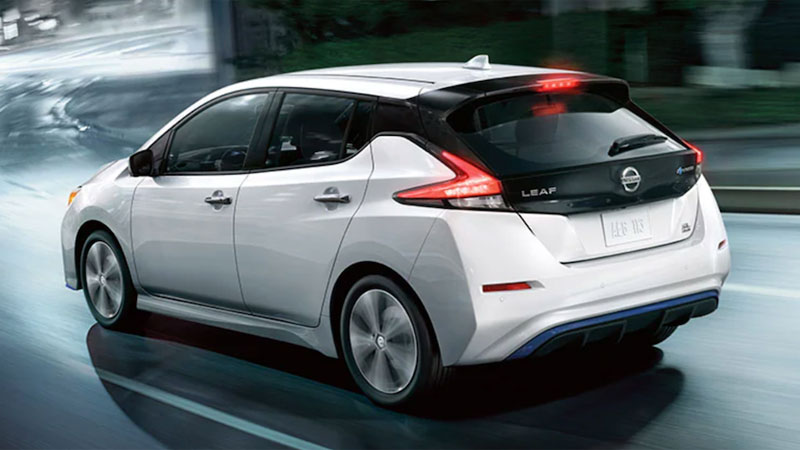Regenerative braking is one of numerous efficiency systems installed on all manners of electric vehicles worldwide. Simply put, they tap the vehicle’s inertia to use the electric motors as generators, thus stopping the automobile via the motor’s mechanical resistance and recharging the batteries in the process.
The system has been in place for more than a century, first appearing in Europe around the 1900s, showcasing the ingenuity that only humans are capable of.
Elements of Regenerative Braking
To explain further, nearly all electric motors are built by using a variety of copper wiring, shafts, hubs, and a myriad of other electrical components. If you apply a current to the windings of copper wiring, they become a magnet, or more precisely an electromagnet.
We all understand they have poles: a north pole and a south pole. We also know from early physics classes that the same poles repel while different poles attract each other.
By using this attraction, we can utilize multiple electromagnets, either linked to a shaft or a hub, and turn them on selectively. If we have three magnets, we can power them on one at a time, each time rotating a bit. By doing so you create a rotary motion, and that’s how an electric motor works explained simplistically (1).
However, what if those magnets already spin without powering them on? Well, we stated above that if you apply a current to those copper windings it turns into a magnet. The process can be reversed. If you rotate a magnet around several copper windings, they will generate electricity.
That’s the concept behind regenerative braking. When a vehicle’s electric motor already spins, the electric motor can easily use that motion to produce electricity. As such, we can use the car’s inertia to rotate the electric motors ourselves without powering them on. By doing so, we generate electricity that can be stored in the batteries, hence the term regenerative braking.
Read Also – Brake Caliper Sticking? (Common Symptoms and Causes)
Electrified Vehicles
We can conclude that to have regenerative braking, we must have an electric motor. As such, as in the majority of cases, regenerative braking exists only on electric vehicles or hybrid vehicles. Mild hybrids can use regenerative braking, but it mainly depends on the manufacturer and whether they intend to install such a system, and if so, how they prefer to do it.
It isn’t as straightforward as in the case of EVs or full hybrids. Moreover, this isn’t limited to cars. Trams, trains, buses, trucks, and even bicycles can employ such a system. The first wide utilization of regenerative braking was installed on a trolley in England in the early 1900s. (2).
Side Effects
Nevertheless, we’re exploiting electric motors to run as generators to slow us down, and consequently, we can also talk about a myriad of side effects. Regenerative braking doesn’t use friction, like the all-known disc and brake pad system.
You cannot bring the car to a complete halt by using only regenerative braking, nor can you keep the car stopped by relying only on it. Furthermore, regenerative braking also isn’t that potent on its own, so emergency stops will also be required to utilize regular brakes.
If driven sensibly and carefully, you will use disc brakes for modest periods, greatly improving their longevity.
Moreover, braking is linked to the acceleration via that electric motor and nearly all cars employ one-pedal driving, since it’s infinitely easier to merge the systems instead of utilizing only the brake pedal to stop. As a manufacturer, how would you even split them apart?
You would need somehow connect the electric motors to the brake pedal but link them only at a certain threshold. Now there will be a significant inconvenience to balance the softness of regenerative braking with disc brakes to transition as smooth as possible. Overall, a massive bother.
See Also – How Does Speed Compensated Volume Work?
Efficient, Clean System
Lastly, regenerative braking is a welcome technology. As efficient as electric motors are, systems like this improve that figure even further. Utilizing energy that is usually wasted via heat and turning it into electricity is nothing short of clever.
With such systems, electric cars and hybrids increase their efficiency substantially in city driving by using every ounce of energy collected. In doing so, the world probably saves tens of thousands of gallons of fuel and multiple terawatts of electricity over numerous years (3).
Furthermore, several people forget that disc brakes also pollute a decent amount. The discs and pads when used turn into fine metal dust and particles, which are more polluting than people realize.
By employing regenerative braking and using regular brakes to a minimum, we’re vastly improving air quality by not breathing in cast-iron dust or fine ceramic specks as well.
Bibliography
- Renault Group. How does an electric car motor work? [Online] February 22, 2021. [Cited: December 4, 2021.].
- Toll, Micah. Regenerative braking: how it works and is it worth it in small EVs? [Online] April 24, 2018. [Cited: December 4, 2021.].
- Jongdai Choi, Jongryeol Jeong, Yeong-il Park, Suk Won Cha. Analysis of regenerative braking effect to improve fuel. [Article] Seoul: World Electric Vehicle Journal Vol. 7, 2015.
[Download PDF].
Photo Attribution
Carnegie-Mellon University: Electric Vehicle Technology — NSC STEM Pathways
See Also – The Pros and Cons of Using Electric Vehicles in Your Fleet
- What Are Radial Tires? - Aug 22, 2023
- What is the Coefficient of Drag? - Jun 7, 2022
- 6 Signs of Steering Rack Failure - May 27, 2022


